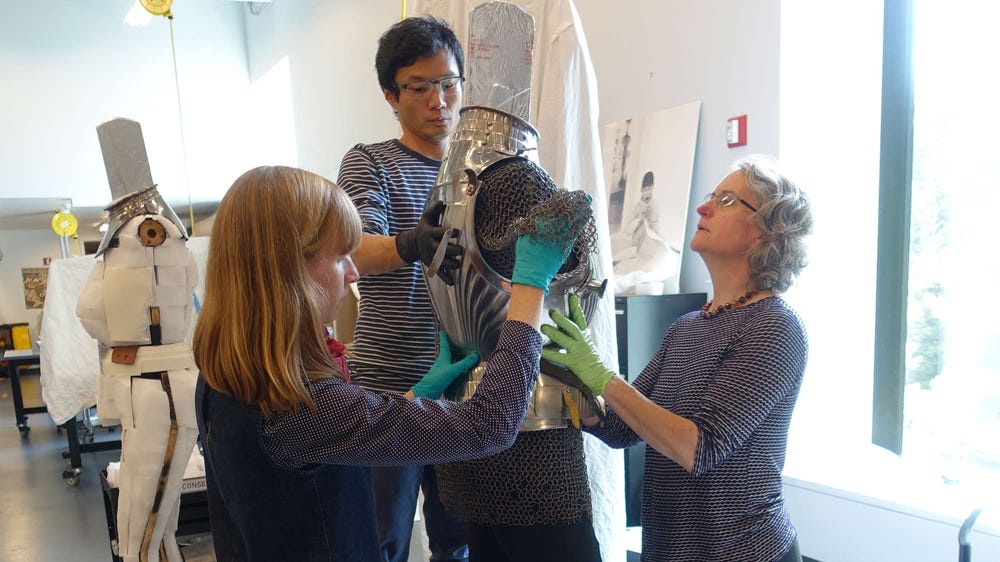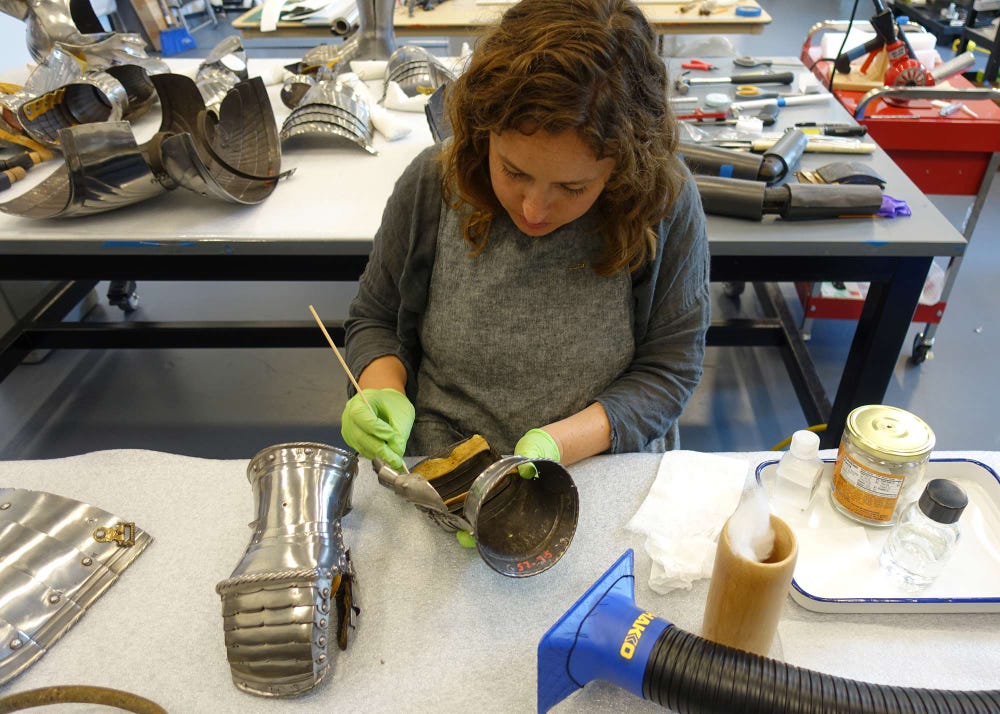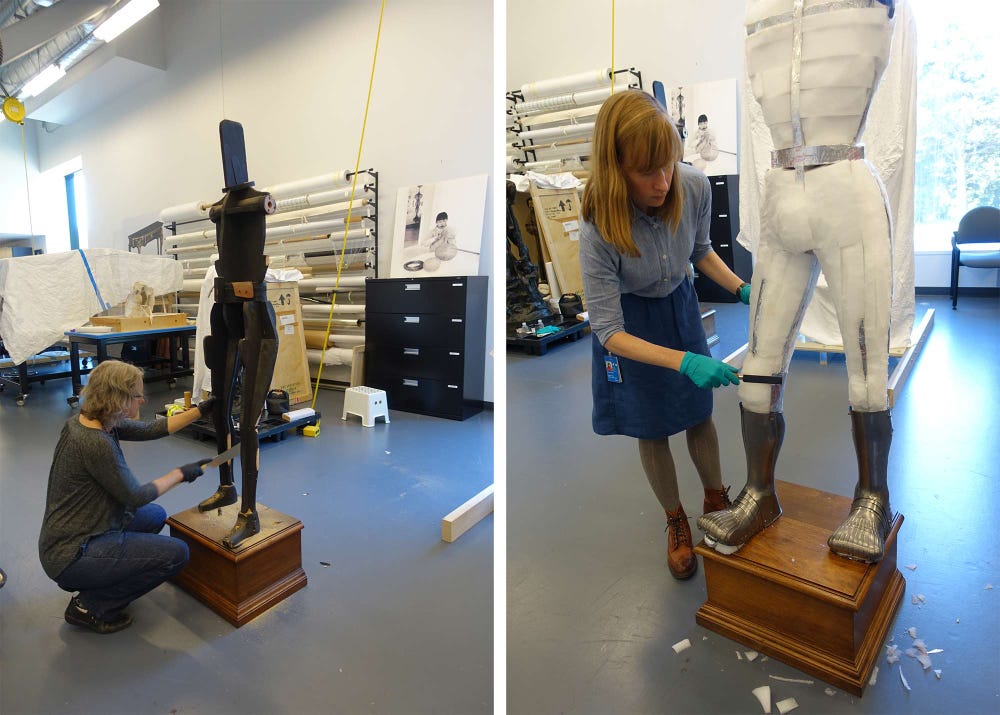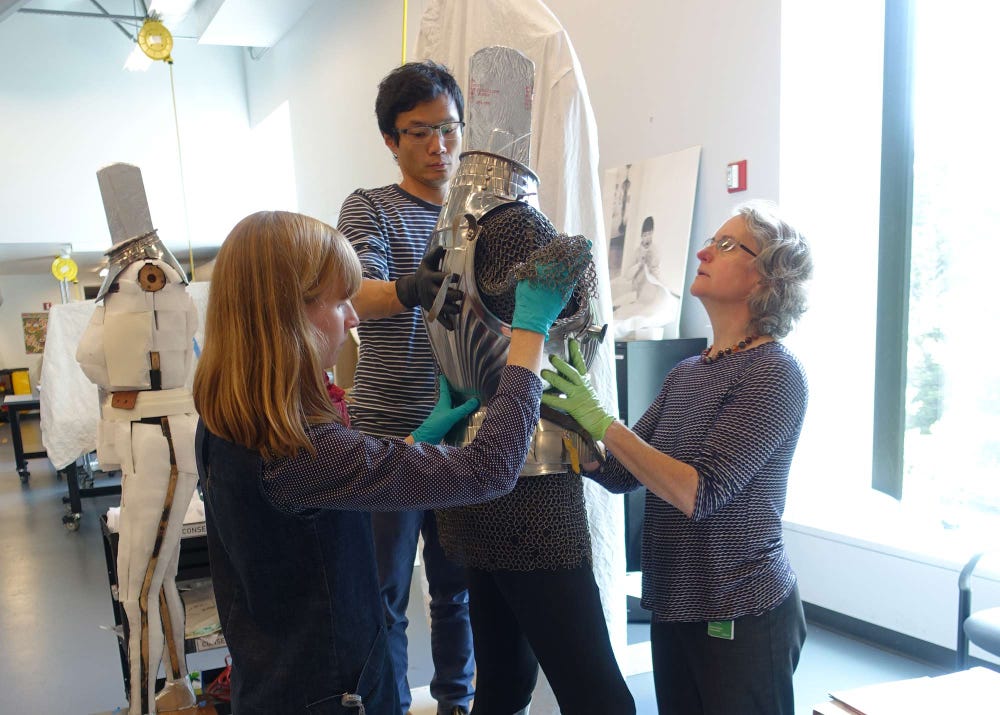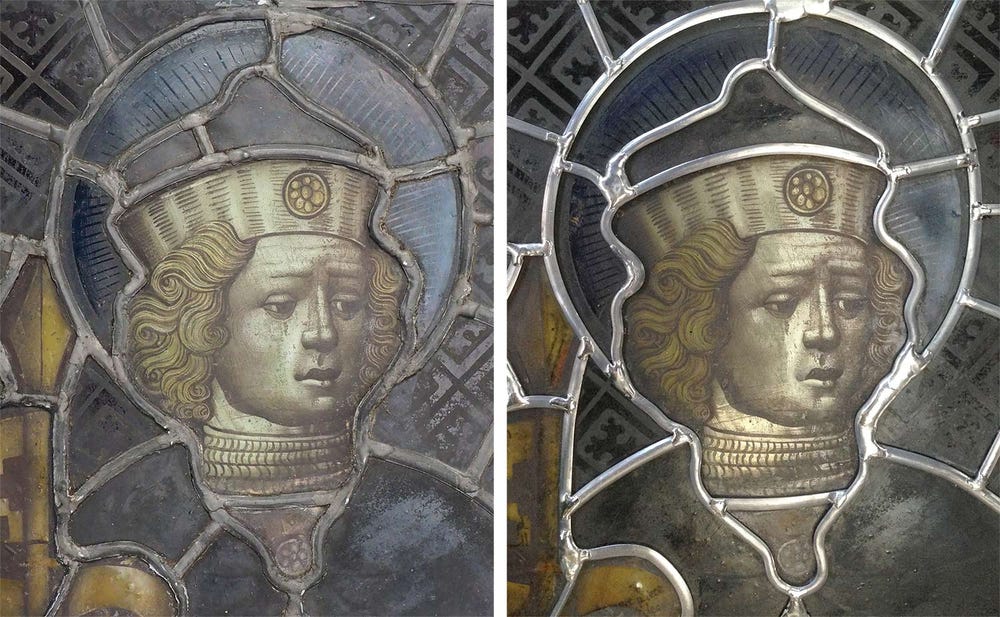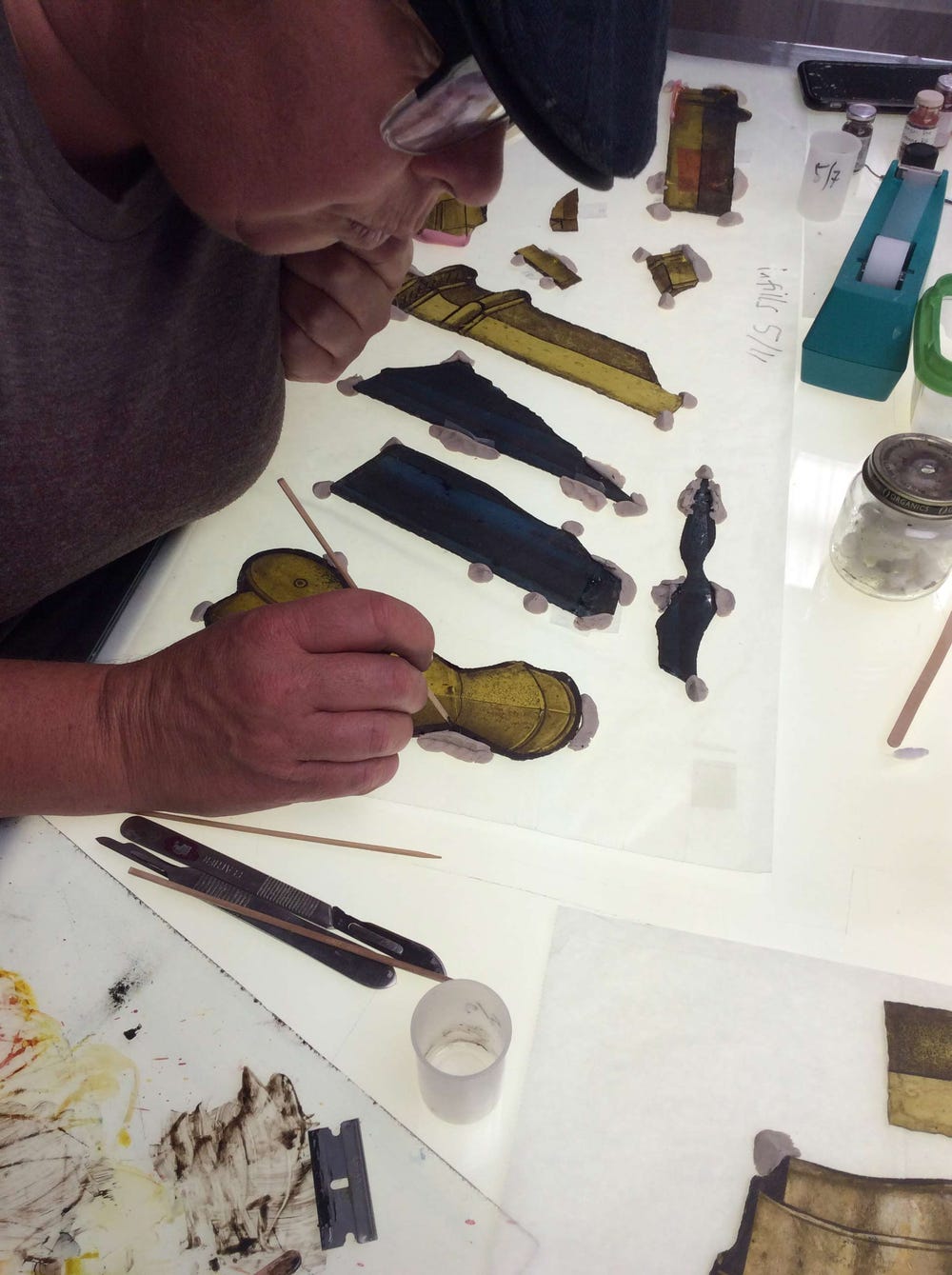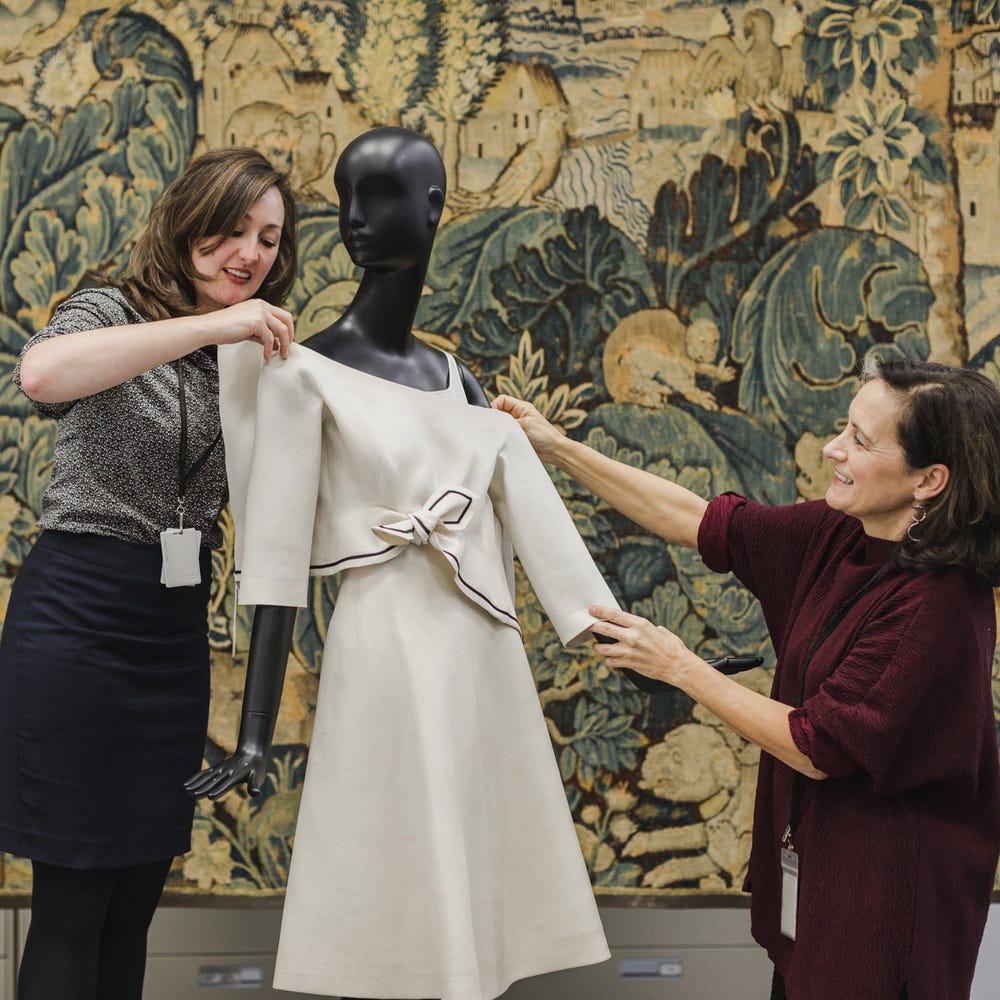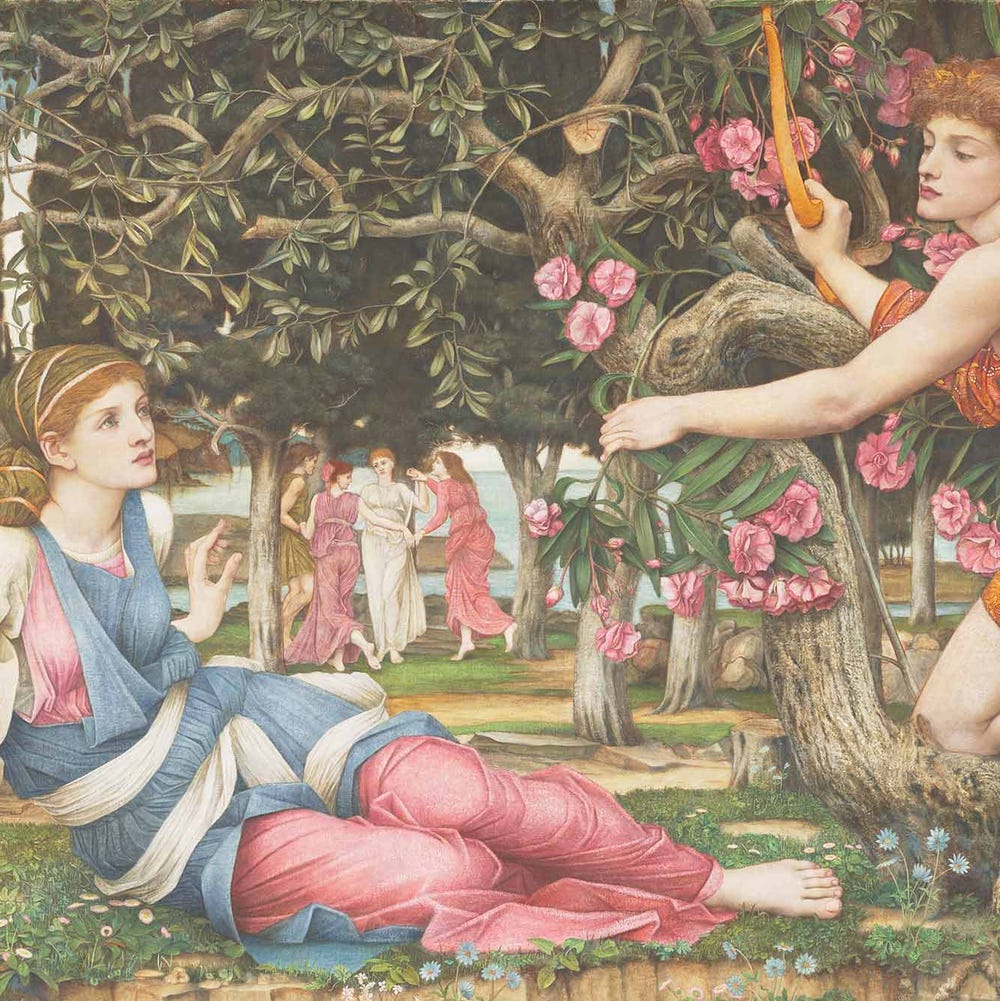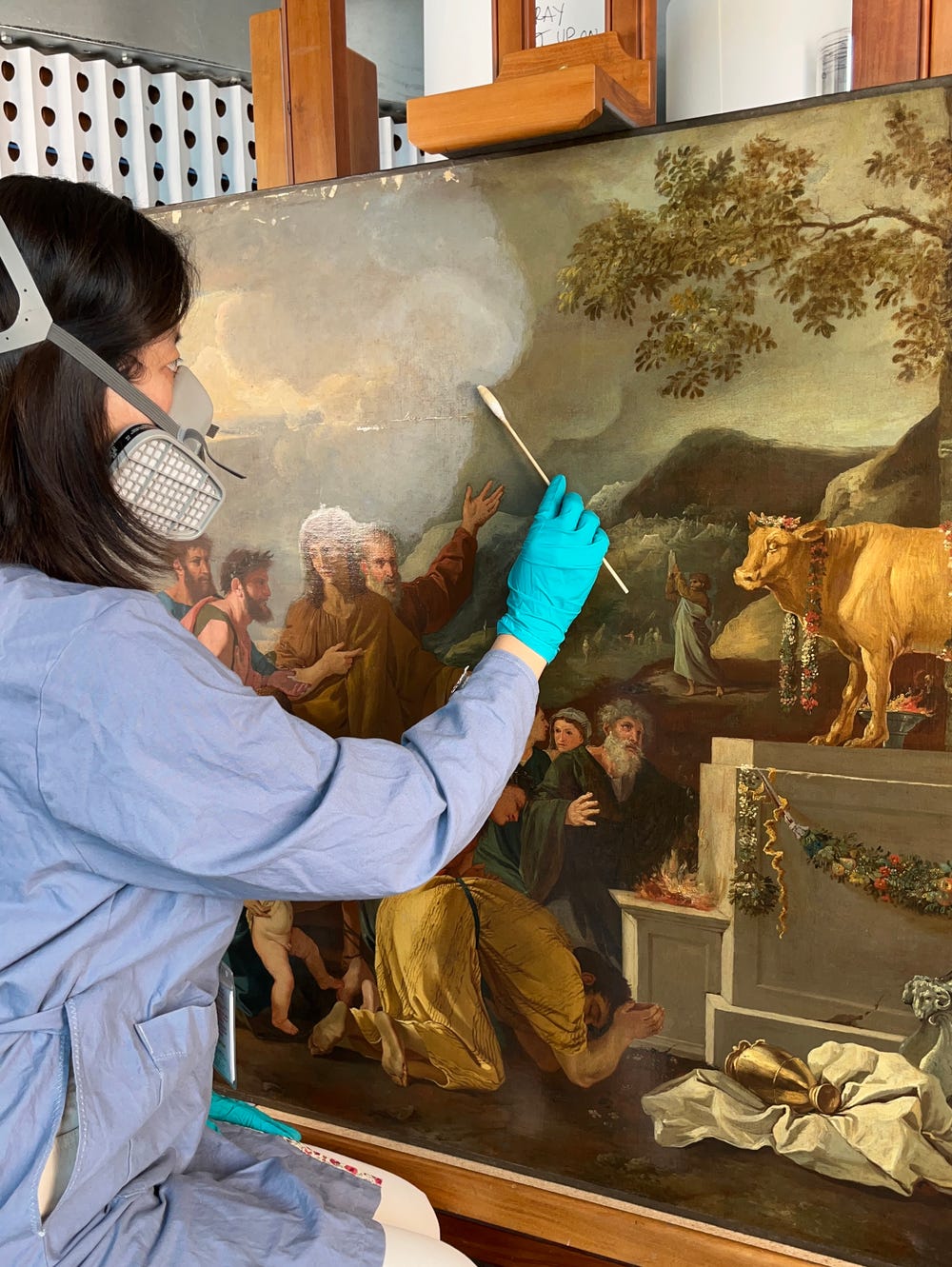The exhibition Truth and Beauty: The Pre-Raphaelites and the Old Masters at the Legion of Honor was created by a team that came together across the Fine Arts Museums of San Francisco. All four conservation departments at the de Young and Legion of Honor, including objects, paintings, works on paper, and textiles, were engaged in the preparations for this installation. Colleagues in the four departments helped shed new light on select works from the Museums’ permanent collections. In this series, our conservators share a behind-the-scenes look at the numerous preparations that took place before the exhibition opened to the public.
Objects Bringing Medieval Craft to Light
Truth and Beauty features armor and stained glass from the Museums’ collections as sources of inspiration for the Pre-Raphaelite painters. Displaying these artworks provided an opportunity to give needed attention to artworks that hadn’t been displayed in recent years.
Fascination with medieval times made the display of suits of armor popular. In the early twentieth century, art dealers combined components from different suits of sixteenth-century German armor and mounted them on wood forms as complete suits. The wood armatures can support heavy armor and allow for dressing and posing the arms. However, they are unpadded, non-archival, and not custom-fitted to the armor. Over time, connections between pieces of armor failed and were bolstered with ties and wires, leaving the armor off-kilter. The Museums' conservators consulted with Edward Hunter, arms and armor conservator at the Metropolitan Museum of Art in New York, about how the armor elements connected originally and how the historic wood armatures, found in their collections as well, are constructed. This helped develop a plan for modifying the wood armatures to make them more presentable and supportive.
Assistant conservator Jena Hirschbein uses solvents to reduce fingerprints and light corrosion on the surfaces of the disassembled armor
Conservators disassembled each suit of armor to examine each piece of armor, identify armory marks and old repairs, and weigh each component. Each piece of the armor connects to others with leather straps and metal rivets. Before reassembly, conservators made needed repairs to broken straps and cleaned the steel of minor corrosion.
Left: Head of objects conservation Jane Williams carves down the wood support in areas that rub against the armor; right: Colleen O’Shea, Mellon Fellow in Objects Conservation, contours foam to fit and support the leg armor.
The gauntlets, which covered the hands and were simply worn like gloves, are the only elements not made to connect to the rest of the suit. For display, museum mountmakers fabricated new metal armatures to secure them. Our conservators drew on techniques common in textile conservation to modify the historic armatures. They sculpted inert foam planks to cushion the armor and give the armature a human form. This allowed for more realistic, coherent, knightly display for the armor.
Objects conservators Colleen O’Shea and Jane Williams and mountmaker Mike Lai check the fit of the armor on its modified support and how well new mounts are supported.
The glass panel of Saint Gereon required both structural and aesthetic conservation treatment to prepare it for display. Specialists in stained-glass conservation are few, particularly outside of Europe. We are fortunate to have a local studio in Oakland, Nzilani Glass Conservation, led by Ariana Makau. A generous donation enabled the Museums to contract with Nzilani for this highly specialized conservation treatment.
Stained-glass windows are built by securing pieces of glass within a network of soldered lead strips called cames. The same technique used by medieval craftspeople is used today. Cames of different sizes and shapes defined the outlines of figures and other design elements and added subtle depth to their compositions.
Detail of Saint Gereon panel before treatment (left) and after treatment (right).
Over the hundreds of years since this object’s creation, many pieces of glass had broken. The glass breaks had historically been repaired with lead strips, as shown here on the blue cloak and upper leg. These were originally single pieces of glass that became crisscrossed with breaks and repairs. Additionally, all of the medieval lead cames had been replaced, likely in the late nineteenth century, in a manner that did not reflect the original craft. These repairs and replacements left the panel visually confusing and structurally weak. A complete re-leading was proposed to restore the visual intent of the makers.
Conservators at Nzilani Glass Conservation painstakingly dismantled the window and cleaned each piece of glass. They repaired breaks with clear conservation-grade epoxy. This made the image easier to “read.” They reassembled the panel using different widths of lead to outline the saint and the columns around him, and added strength with a border of zinc, a more rigid metal than lead. Their work ensures the long-term stability of the panel of Saint Gereon.
Amelle LeRoux joining and filling losses to individual glass panes from the glass panel of Saint Gereon.
